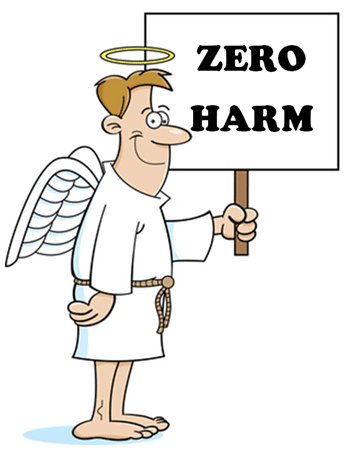Originally posted on June 22, 2013 @ 11:49 AM
 ‘Argument progresses in three stages: superficial simplicity, confused complexity and profound simplicity. Mindful organisations and leaders are prepared to struggle through confused complexity to find profound simplicity. Mindless organisations tend to settle for the first superficial simplicity they stumble on and, as a result, think they have discovered the solution to a complex problem eg. workplace injuries, breaches in security or defects in quality. Being able to tackle the messiness of confused complexity requires maturity, adaptability and a sophisticated sense of leadership’. (Risk Makes Sense p. 44.)
‘Argument progresses in three stages: superficial simplicity, confused complexity and profound simplicity. Mindful organisations and leaders are prepared to struggle through confused complexity to find profound simplicity. Mindless organisations tend to settle for the first superficial simplicity they stumble on and, as a result, think they have discovered the solution to a complex problem eg. workplace injuries, breaches in security or defects in quality. Being able to tackle the messiness of confused complexity requires maturity, adaptability and a sophisticated sense of leadership’. (Risk Makes Sense p. 44.)
I wrote this a while ago but have been reminded of the attraction of the simplistic several times this week. There is nothing wrong with endeavouring to make things simple but major issues with delighting in being simplistic. There is no great advantage in putting one’s head in the sand and imagining the complexity of risk and safety does not exist. Anything that involves the human judgment and decision making of people is complex but this doesn’t mean things can’t be ‘tackled’. It is another thing to think that the whole dynamic of risk and safety can be simplistically ‘tamed’.
This week the SIA released their OHS Professional journal. Inside was an opinion piece (p. 10 -11) declaring that; ‘accidents are preventable’ and that hindsight was a valuable method for validating logic. The article states ‘using this simplistic model we can see that zero harm is possible and realistic’ (p. 10). This is the problem with being simplistic. Anyone with any expertise in heuristics and cognitive bias would know that hindsight bias is problematic, it drives a ‘halo effect’ that allows someone the position of superiority. We can all look back and see how things may have been done but this is a delusional way of thinking. If we look back at the causes of World War One maybe it could have been prevented, of what value is such thinking?
Humans are not omnipotent or omniscient and cannot know the future, that is why risk is all about uncertainty. The logic of the ‘simplistic model’ in this article promotes the naïve idea that hindsight bias is a valuable tool for developing logical thought. Just because I can see what could have happened after an event doesn’t mean I can claim superior wisdom compared to the person, who at the time, acted in risk in the face of uncertainty. The simplistic logic of this article leads to perfectionist and absolutist nonsense that proposes that humans faced with uncertainty can ‘prevent all injuries’. The next step is to blaming and prosecution on such logic. A delightful position for all of those who consider they can predict what is uncertain. This is the trouble with what is simplistic, the writer of the article ends up using binary opposition gymnastics based on a logic of perfectionism to sustain a position of safety fundamentalism.
The ideology of zero is an ideology that is anti-human and anti-learning. When I go to hospital I want an x-ray despite the fact that its radiation is harmful. When I teach my grandchildren how to ride a bike I don’t fear a skinned knee. The nonsense of risk aversion is anti-learning. There is no learning without risk.
The final insult of this simplistic article published by the SIA is, an unsearched view that claims that ‘zero harm is empowering’. The opposite is the case. There is no evidence for such a view other than emotive illogical binary oppositionalism. I have a survey database of over 60,000 workers and the majority of workers find that the rhetoric, logic and ideology of zero are alienating.



A.B. says
On a very high level let’s say corporate. Say for example a publicly traded company X has had for 20 years the “zero harm goal” vision. Then for year 21 they remove said slogan from their vision and the press catch wind of the removal and write an article which then leads to share prices doing down costing the company millions. In that same example, let’s say someone does get hurt in company X who then sue for damages and part of that lawsuit is “company X removing zero harm from their vision”. It’s easy to see why someone would rather keep the status quo than change it.
Rob Long says
Many ‘what ifs’ there. You can easily conjecture the opposite.
What if a board decide to humanise the way they tackle risk and dump the brutality of zero? What if the culture of the organisation then improves? What if they decide zero a meaningless slogan that has no connection to reality and the improvement in culture causes a rise in share price? What if said improvement saves the company millions? Then if there is an event, they know that it’s just a anomaly amidst the many things that have improved. Rather than lose out, all gain. This is not speculation or conjecture but actually happens, and has been documented in the book ‘It Works’.